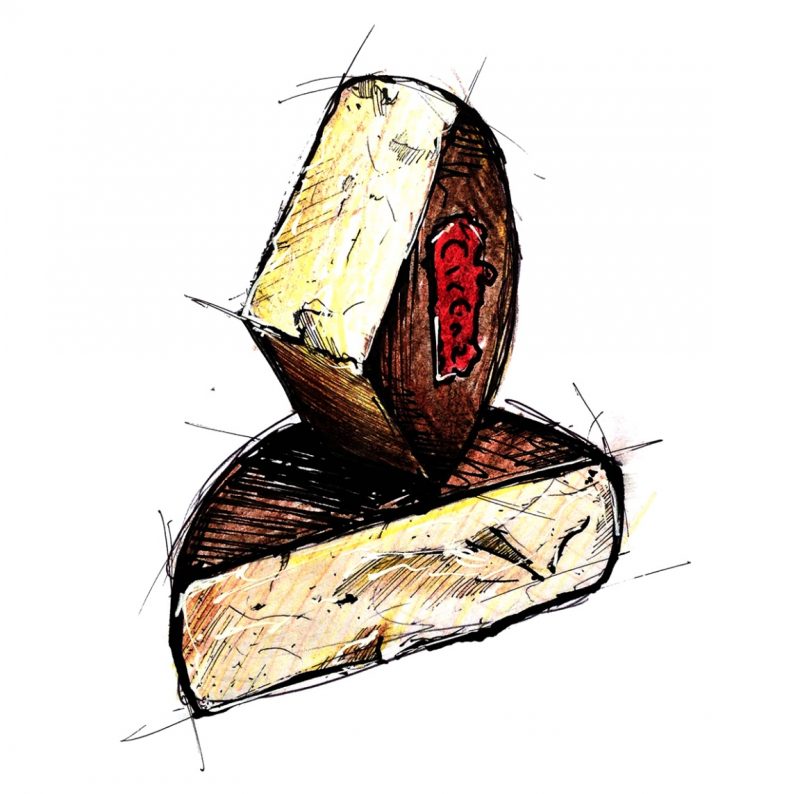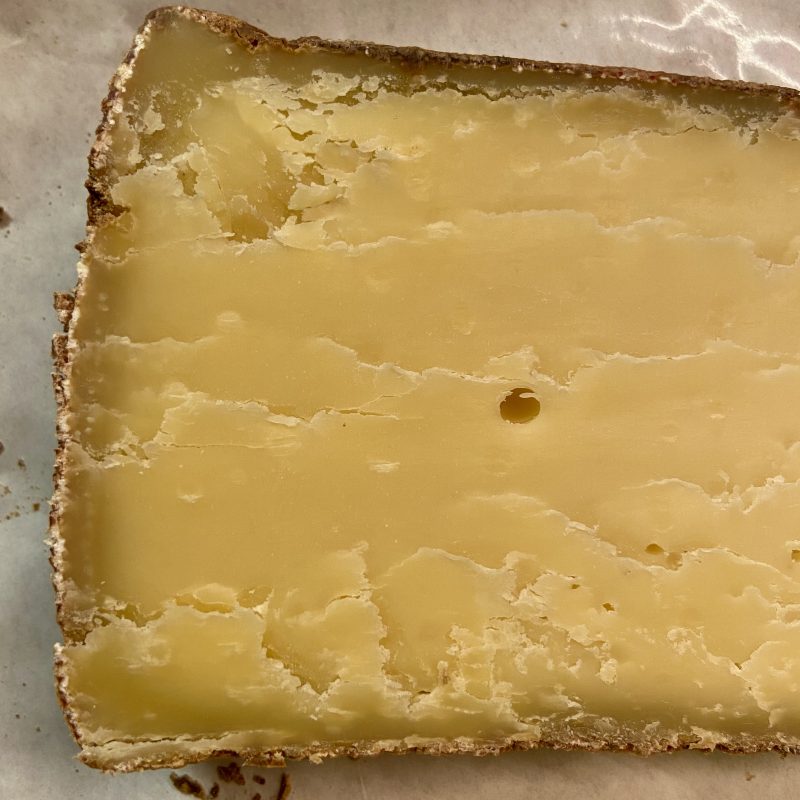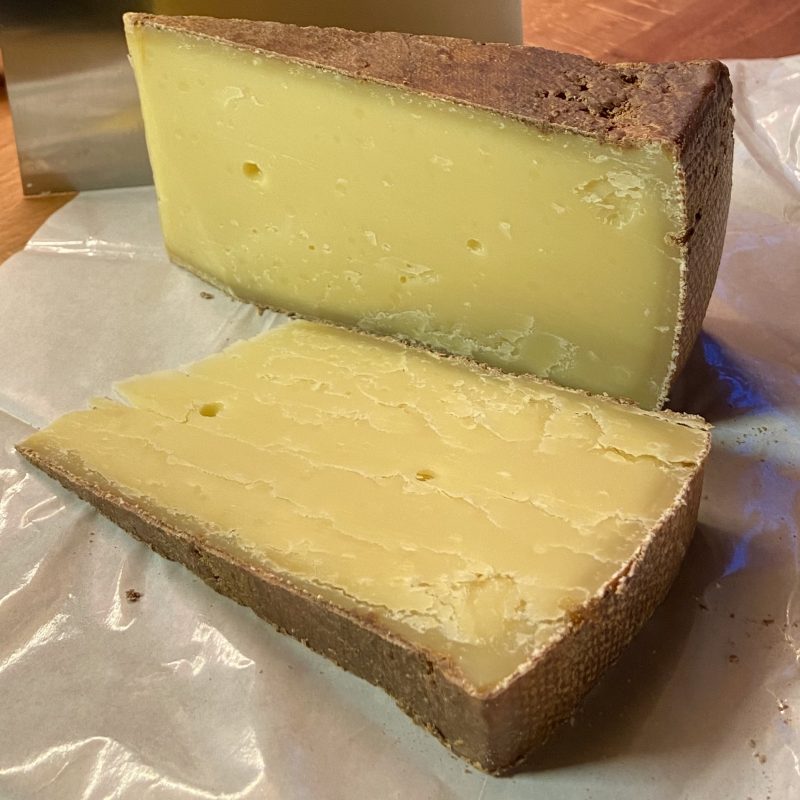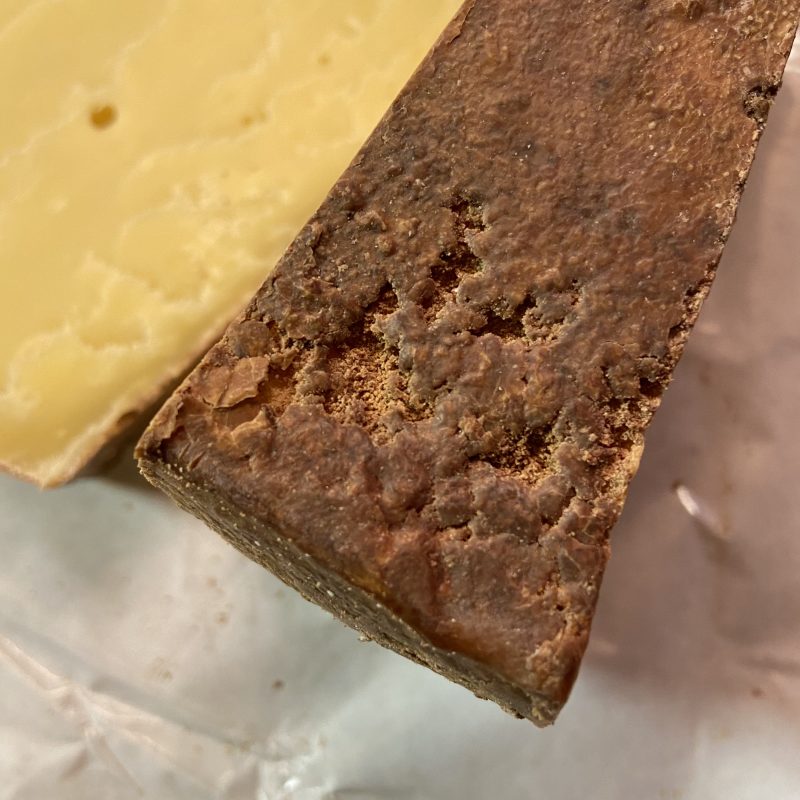This a monthly series which I have been publishing for quite some years. You can subscribe here, to get the latest cheese delivered directly on to your screen.
Almost two years old, dense and brittle, yet the very opposite of dry, the hard, crumbling density melting into a gorgeously fruit and caramel driven loveliness, both savory and sweet, cheese and dessert, like a rich rice pudding yet so much better… Cironé is quite a newcomer at cheese counters, but in its essence an ancient classic. A small number of dairy farmers in the small side valleys of the Emmental east of the Bern, around 1000 meter up, get their act together and bring the milk to a creamery (and no, I had no clue either where Zäziwil might be ;). There the raw milk is worked into hard round wheels of 6.5 kilograms (small in the Emmental context), matured in caves while being turned and washed regularly for several months.
But from that point on Cironé is different, because the good cheesemakers of Eyweid are teaming up with Jumi, founded back in 2005 by six cheese-crazies, bold free thinkers seizing the ample space freed up by the Swiss Cheese Union’s abolition. That had reduced cheese production to a small number of well-known varieties, whereas now anything is possible, as for instance shown by Willi Schmid in Toggenburg. „Notions such as tradition and creativity“ the Jumi folks say, „are relative“. I couldn’t agree more. „It’s all been around before, what changes is just the point of view.“
For the Cironé (below is the Jumi depiction) they even went a step further and turned one of (almost) any creamery’s arch enemies into an ally: the cheese mite, ciron in French. Because after 12 months of washing and turning in a first, „classic“ cave the wheels are moved into another one. Here the mites are allowed, expected to get into action. Worldwide there are about 10,000 varieties of these ubiquitous microorganisms (up to 2000 of them can live on a cubic centimetre of cheese), and the cheese loving ones are called tyrolichus casei. As soon as a cheese rind is being neglected and dries out, they reliably turn up and stuff themselves, creating holes and craters while munching. The result from the cheesemaker’s point of view: less and less cheese, crumbly dust on the shelves as a remains of the orgy. Traditional reaction when faced with these storage pests: anger, weeding out the respective wheels, and fight, as the classic resort by (I am quoting a classic reference book) „fumigating the spaces with methyl bromide“. The latter is a natural antibody produced by a number of maritime creatures as well as members of the cabbage family such as rapeseed, for protecting themselves against predators, a neurotoxin used by humans in pest control.

The Jumi alternative (but also common in Wachwitz, or with Mimolette): see the positive side of a pest and deliberately put it to use. Allow the mites to gorge themselves, making for a more porous rind and a cheese that matures with more aeration and quite differently, developing very characteristic citrus fruit aromas in the process. And after around six months reign in the new allies by transferring the wheels to a third cave where they are rubbed with oil and turned regularly for a few more months. That’s when the waxy brown rind forms, almost chocolate-like.
Very fine, very cool, very forward-thinking: working together, with instead against one another. No poison. Excellent life motto in general – cheesio.

If you enjoyed reading this, you might consider clicking on the button below and supporting me in my work. I’d be more than happy and very grateful. Thank you.



